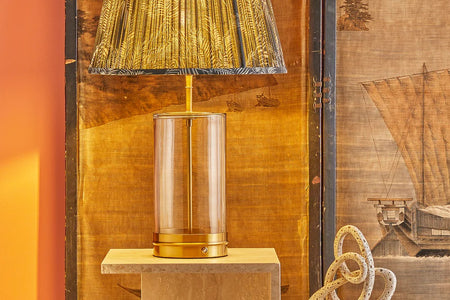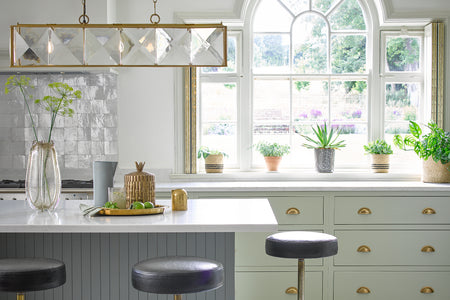
This year Pooky discovered the wonders of jute, which turns out to be rather brilliant for making beautiful shades. Here’s everything you need to know about jute lampshades and this remarkable, eco-friendly material...
Cotton, silk, parchment, paper, linen… Pooky have made beautiful shades out of ‘em all. We even have a concrete shade. But what about jute? Isn’t that a bit rough for a stylish shade? Not a bit of it, it turns out.
‘The golden fibre’
The jute is a tropical plant native to the Ganges Delta in Bangladesh and West Bengal in India, and over the centuries people have been using it to make all sorts of things, from sacks and ropes to clothes and carpets - and now, spectacular lampshades! Nicknamed the ‘golden fibre’ for its warm golden colour and silky sheen (and its financial value), the particular qualities of jute make it exceptionally, almost weirdly versatile. It can be used to produce very strong twine and rope at one end of the scale, and a fine, silk-like cloth at the other. In South Asia they were making jute textiles as early as the 3rd millennium BC. Jute trading was a big feature of the British Empire, the material being useful in industries like fishing, construction, agriculture and even the military. During the First World War, over a billion jute sandbags where exported from Bengal to the western front trenches. Jute plant
Jute plant
An eco-friendly fabric
Jute is a sustainable rain-fed crop with little need for additional fertilisers and pesticides and a very low carbon footprint. It’s fully biodegradable, and every part of the plant can be used. It’s also high-yielding and fast to grow, taking just four to six months to be ready for harvesting and it also plays an important role in helping to protect plants and seeds, and control soil erosion. In other words, jute is very green. Raw jute fibre
Raw jute fibre
How jute fabric is made
Jute is one of the world’s most popular natural fibres for making textiles. In fact, it’s the most important natural vegetable fibre next to cotton in terms of its usage and production. To make jute fabric, after harvesting, the stems of the jute plant are tied into bundles and steeped in slow running water for around 2-3 weeks, in a process known as retting. The non-fibrous materials are then scraped off and the fibres are extracted, via a process called stripping. The fibres are beaten with a soft mallet or paddle to soften them, and then dried and graded. The fibres can then be processed to make jute yarn.
Why jute is ideal for making lampshades
Nowadays, jute fabric is increasingly used to make lovely things (clothing, rugs, upholstery) as well as practical ones. And it turns out to be fab for lampshades too. As well as being strong and durable, jute low thermal conductivity and anti-static properties - all very handy for creating gorgeous lampshades. More importantly, it’s also colour and light-fast, which means that we can really play around with colour combinations - mixing and matching complementary or contrasting colours for the outside of the shade and the inner linings, helping to create a lovely glow and warmth. We used a wide weave, and the magic of these stunning shades is that - especially when the light is on - through the weave you can see the contrasting liner inside. When we were putting together our collection of jute shades we had a lot of fun with this. Take, for example, the straight empire lampshade in acid yellow with its warm, mellow jute shade and dramatic pink liner. Eccentric but safe…Or the the dark navy tall tapered lampshade, which features a beautiful deep red jute outer, set against a spring-like yellow lining:
Meanwhile, our jute pendant lampshades offer a dash of elegance and a bit of drama too.. A fabric baffle helps to diffuse the light, while the stunning shape and wide weave of the lampshade really do justive the natural beauty of the jute fabric. And the look is completed with a very stylish twisted silk flex. Rough it ain’t...
 Smaller jute pendant in red
Smaller jute pendant in red
Browse all our jute lampshades here and play with our jute pendants here.


















